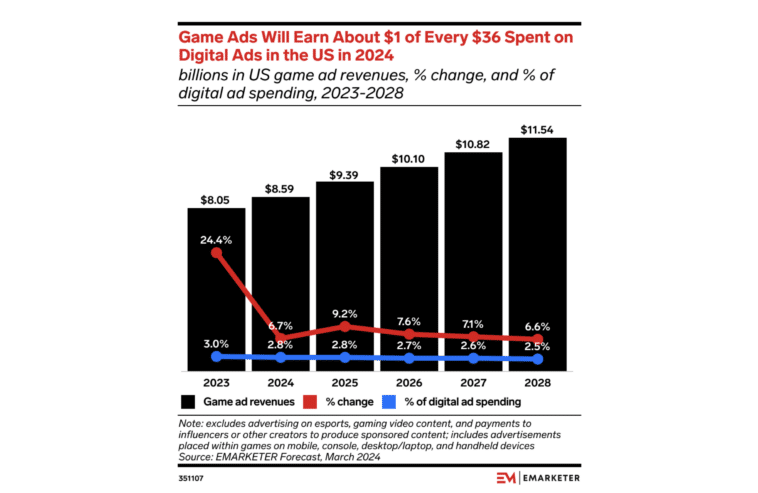According to eMarketer’s March 2024 forecast, US game ad revenues will see a modest growth of 6.7% this year, reaching a total of $8.59 billion. This marks a significant slowdown from the nearly 25% growth observed in 2023.
Despite the consistent influx of advertising dollars into the gaming industry, US game ad revenues are not expected to surpass the $10 billion threshold until 2026. This projection highlights a tapering growth trajectory, reflecting broader trends in the digital advertising ecosystem. The share of digital ad spend allocated to gaming is gradually decreasing, suggesting that advertisers are diversifying their investments across various digital platforms beyond gaming.
A substantial portion of in-game ad spending is concentrated in the mobile gaming sector. Mobile games, with their vast and engaged user base, present an attractive avenue for advertisers. Game developers themselves are the primary purchasers of these ads, leveraging them to promote new games and enhance player engagement. The dominance of mobile gaming in the ad landscape underscores the importance of targeting mobile platforms for advertising campaigns.
A recent study reveals that in 2023, mobile games maintained a significant presence in the global gaming market, representing 49% of total revenue despite a slight 2% year-over-year decline in consumer spending.
While traditional in-game advertising continues to play a crucial role, new formats and channels are gaining traction. Intrinsic ads, which seamlessly integrate into the gaming environment, offer a non-intrusive way to reach players. These ads enhance the gaming experience by appearing as natural elements within the game, such as billboards or product placements. As a result, intrinsic ads are becoming increasingly popular among advertisers seeking to create more engaging and immersive campaigns.
Programmatic advertising is also on the rise, allowing for more efficient and targeted ad placements. By leveraging automated systems, advertisers can reach specific audience segments with tailored messages, enhancing the effectiveness of their campaigns. This trend is expected to continue as programmatic technology evolves, offering more sophisticated targeting capabilities.







Comments
Loading…